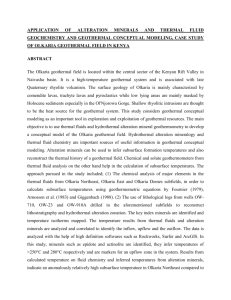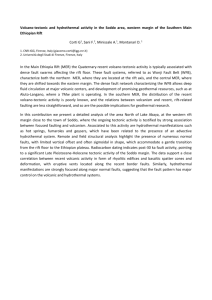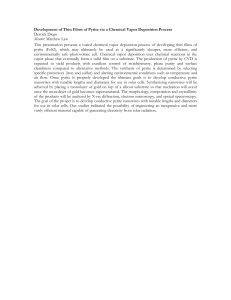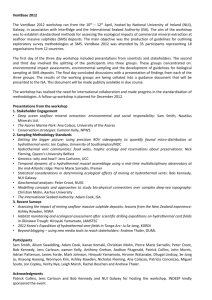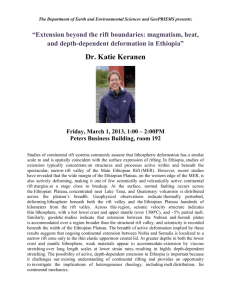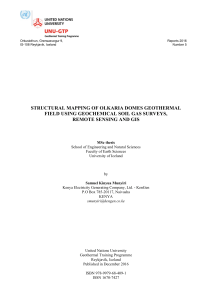EPITHERMAL GOLD DEPOSITS IN RIFT SETTINGS
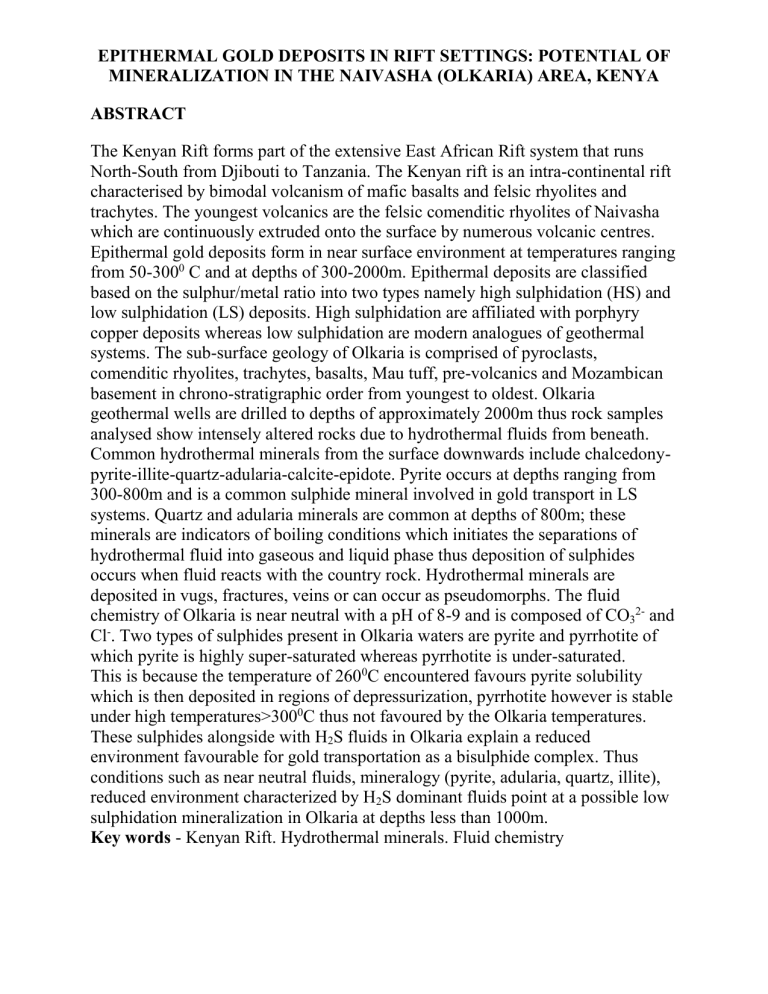
EPITHERMAL GOLD DEPOSITS IN RIFT SETTINGS: POTENTIAL OF
MINERALIZATION IN THE NAIVASHA (OLKARIA) AREA, KENYA
ABSTRACT
The Kenyan Rift forms part of the extensive East African Rift system that runs
North-South from Djibouti to Tanzania. The Kenyan rift is an intra-continental rift characterised by bimodal volcanism of mafic basalts and felsic rhyolites and trachytes. The youngest volcanics are the felsic comenditic rhyolites of Naivasha which are continuously extruded onto the surface by numerous volcanic centres.
Epithermal gold deposits form in near surface environment at temperatures ranging from 50-300 0 C and at depths of 300-2000m. Epithermal deposits are classified based on the sulphur/metal ratio into two types namely high sulphidation (HS) and low sulphidation (LS) deposits. High sulphidation are affiliated with porphyry copper deposits whereas low sulphidation are modern analogues of geothermal systems. The sub-surface geology of Olkaria is comprised of pyroclasts, comenditic rhyolites, trachytes, basalts, Mau tuff, pre-volcanics and Mozambican basement in chrono-stratigraphic order from youngest to oldest. Olkaria geothermal wells are drilled to depths of approximately 2000m thus rock samples analysed show intensely altered rocks due to hydrothermal fluids from beneath.
Common hydrothermal minerals from the surface downwards include chalcedonypyrite-illite-quartz-adularia-calcite-epidote. Pyrite occurs at depths ranging from
300-800m and is a common sulphide mineral involved in gold transport in LS systems. Quartz and adularia minerals are common at depths of 800m; these minerals are indicators of boiling conditions which initiates the separations of hydrothermal fluid into gaseous and liquid phase thus deposition of sulphides occurs when fluid reacts with the country rock. Hydrothermal minerals are deposited in vugs, fractures, veins or can occur as pseudomorphs. The fluid chemistry of Olkaria is near neutral with a pH of 8-9 and is composed of CO
3
2 and
Cl . Two types of sulphides present in Olkaria waters are pyrite and pyrrhotite of which pyrite is highly super-saturated whereas pyrrhotite is under-saturated.
This is because the temperature of 260 0 C encountered favours pyrite solubility which is then deposited in regions of depressurization, pyrrhotite however is stable under high temperatures>300 0 C thus not favoured by the Olkaria temperatures.
These sulphides alongside with H
2
S fluids in Olkaria explain a reduced environment favourable for gold transportation as a bisulphide complex. Thus conditions such as near neutral fluids, mineralogy (pyrite, adularia, quartz, illite), reduced environment characterized by H
2
S dominant fluids point at a possible low sulphidation mineralization in Olkaria at depths less than 1000m.
Key words - Kenyan Rift. Hydrothermal minerals. Fluid chemistry
